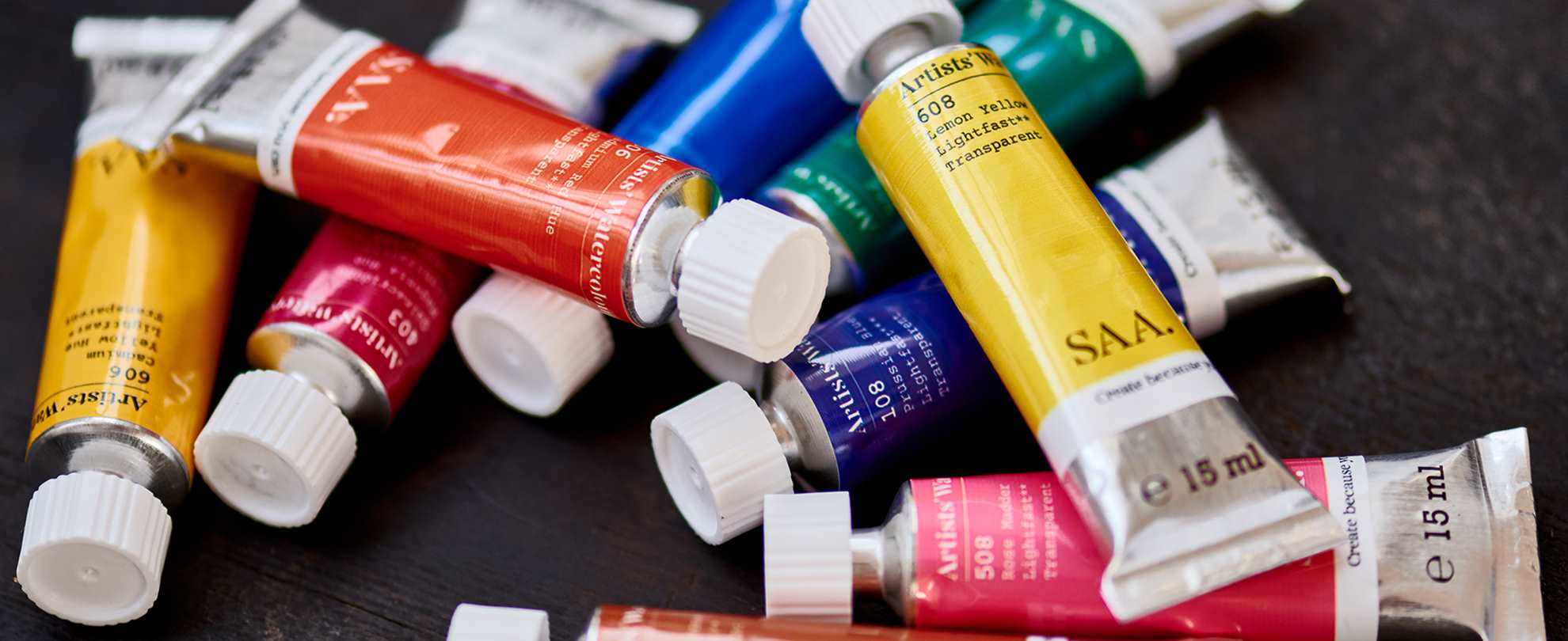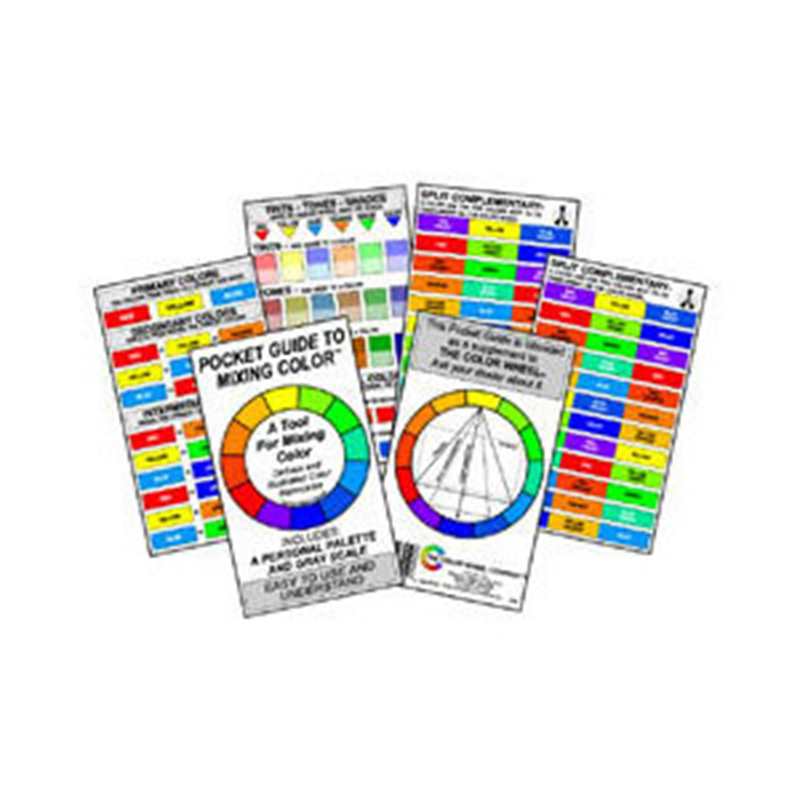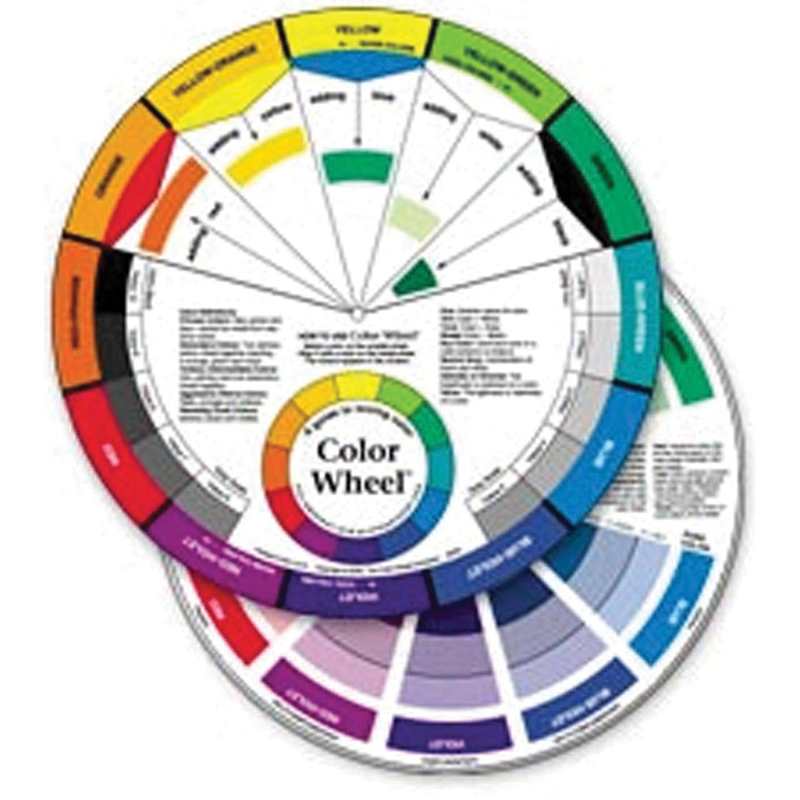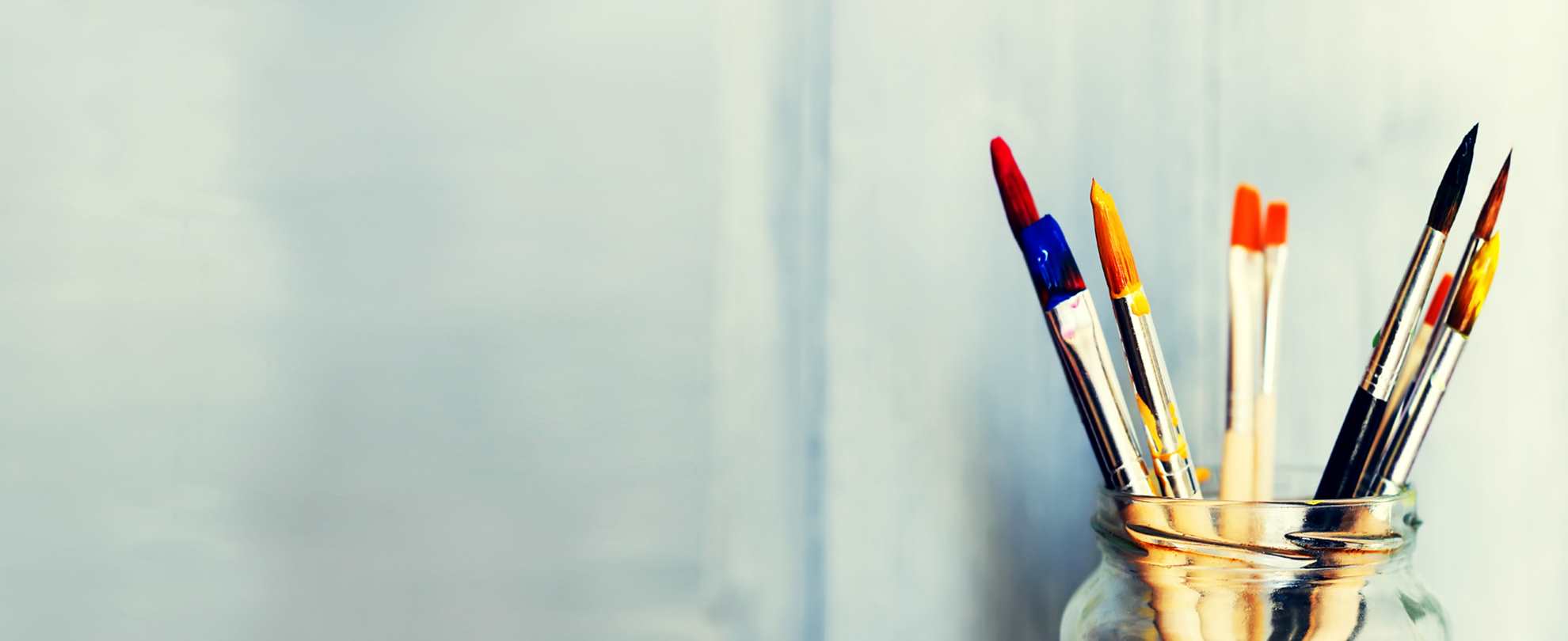

Colour wheels
Creating a colour wheel is probably something we do in our early years when we are learning about colours. Red and yellow make orange, blue and red make purple etc. Colour wheels can be created for all types of mediums to help our understanding of colour.
Solid knowledge of colour theory not only helps in understanding colours, the type of paint and how to mix colours but from just three primary colours Red, Yellow Blue you should be able to create pretty much every colour in the spectrum. We are familiar with the circular format of a colour wheel, but did you know that Sir Isaac Newton developed the first circular diagram of colours in 1666. There are lots of great colour wheels on the market and these will help to give you a good knowledge of all the terminology associated with a colour wheel.

You will find that there are lots of different reds, yellows and blues within an artist's colour range. It is not always easy to identify the primary colours but in some ranges, colours are easily identified as subtractive primary colours (RYB) as they will be described as a primary colour or cyan, magenta or yellow (CMY). This makes it easier to denote the colour which are the primary colours for mixing but this is not always the case.
Primary colour is a colour which cannot be created by mixing other pigments and should be a single pigment colour in order to be able to mix clean colour mixes. You will find that many suppliers use cyan, magenta and yellow colours CMY as their primary colours because they are cool colours which create bright cool mixes.

Primary Colours
Here is a simple colour wheel in watercolour created with the colours Daler Rowney primary colours have confirmed they recognise as their 3 x primary colours.
Daler Rowney Artist watercolour, primary colours
- 664 Permanent Yellow
- 414 Quinacridone Magenta
- 140 Phthalo Blue
MAGENTA (red), CYAN (blue) & YELLOW are the basis for all the other colours in the spectrum.

Secondary Colours
GREEN, ORANGE, PURPLE these are made from mixing equal amounts of two of the primary colour's primary colours
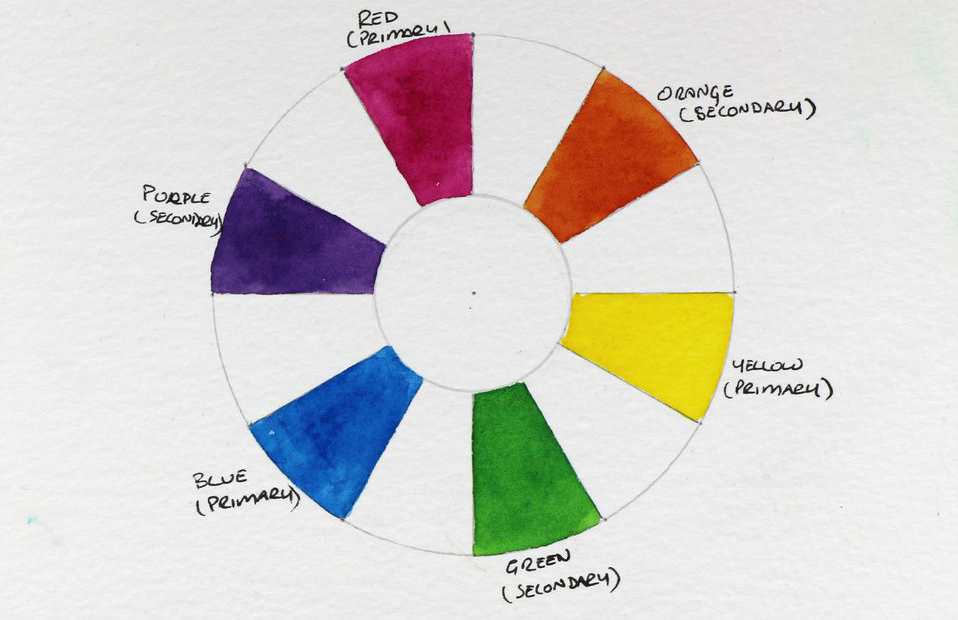
Tertiary Colours
In between each of the Secondary and the Primary colours are the 6 x Yellow-Orange, Red-Orange, Red-Purple, Blue-Purple, Blue-Green and Yellow-Green which have been created by mixing a primary and a secondary colour.


Complementary colours & Analogous colours
Complementary colours – These are colours which are opposite each other on the colour chart. Used together they will create high contrast colour combinations that appear brighter next to each other.
Analogous colours – Three are colours which sit next to each other on a 12-part colour wheel and have a similar hue. They will harmonise and work well together.
This is only a start as there are still many more variations of colours which can be created.


Creating browns and greys (neutral colours)
By mixing all three of the primary colours you can create a large variety of subtle blends of browns and greys.
Browns- One of the easiest ways to start a brown mix is to mix equal amounts of red and yellow to create an orange and add small amounts of blue to build the required colour.
Greys- The same with a grey this is a more even mix of all three primaries, A good starting point is to mix even amounts of the blue and yellow to create a green and add small amounts of red.
The colours can be adjusted by adding varying amounts of each or the primary colours to create a whole host and variations of neutral colours.


Warm and cool colours
The temperature of the colours in a creative piece of work promotes differing responses and emotions. The colour wheel can be used to help identify the warm and cool colours.
Warm colours are colours on one side of the colour which have a bias towards red, these include purple-red, red through to yellow and can be associated with warmth and fire colours. Warm colours communicate energy and vibrancy.
Cool colours are on the other side of the colour wheel with blues, purples, greens and yellow green which are with water or ice. These are calming and reflective.
Knowing the colour temperature of a colour is useful in composing a painting and representing distance as cool colours will appear to recede and warm colours make the objects come forward. Even in the primary colours (single pigment reds, Yellow and blues), there will be differences in colours and temperature.
Here are examples of two colour wheels completed using cool primary colours Magenta, yellow and Cyan (CYM) and warm primary (RYB) Cadmium Red, Cadmium Yellow and Ultramarine blue.
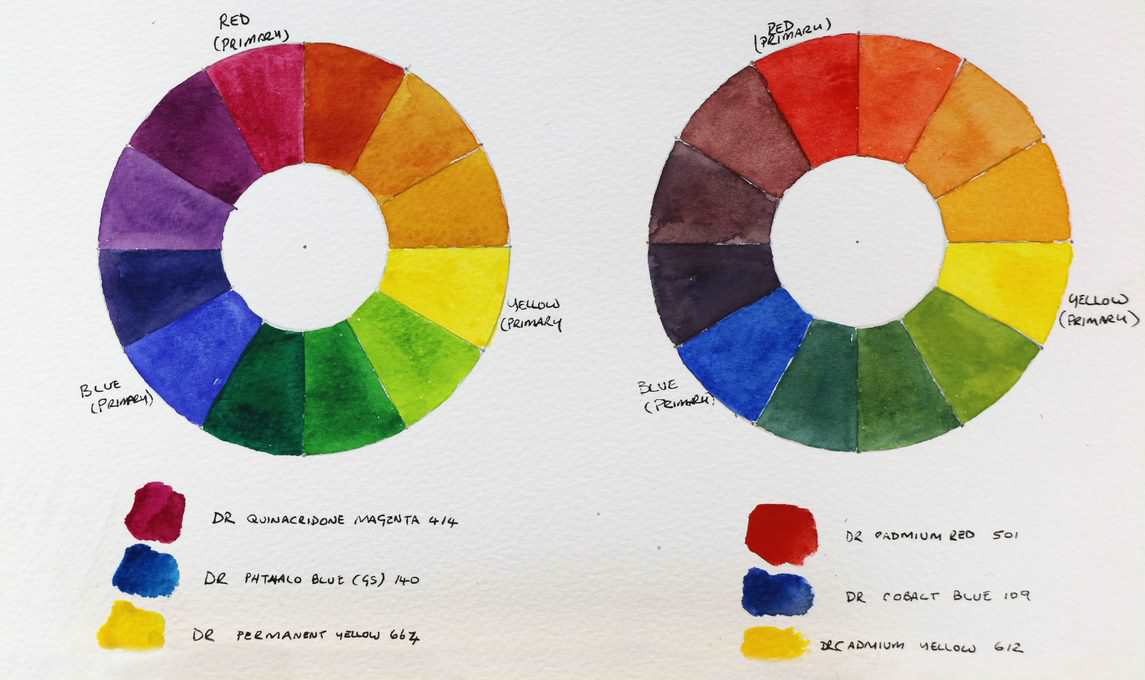
The first one uses Magenta, Yellow and Cyan which give bright colours mixed and are towards the cool colour range and the other one uses warm primaries Cadmium Red, Cadmium Yellow and Cobalt blue which offers different hues of secondary and tertiary mixes.
Cool colours - have a bias toward blue
Daler Rowney Artist watercolour, primary colours
- 664 Permanent Yellow
- 414 Quinacridone Magenta
- 140 Phthalo Blue
Warm colours – have a bias toward red
Daler Rowney Artist watercolour
- 612 Cadmium Yellow
- 501 Cadmium Red
- 109 Cobalt Blue

Create your Colour Wheel
You can create an easy colour wheel using the colours you have in your supplies and painting a colour wheel will help gain an understanding of how the colours mix together.
Start with a red, yellow and blue colour and place them in the separate sections of the colour wheel. Then using 2 x primary colours create the secondary colour by keeping the pressure of applicating the same and layering the colours on top of one another. Repeat this for the tertiary colours.
Coloured pencils can be layered over each other with the same pressure. Pastels colours can be blended into each other and Watercolour pencils can be layered like dry pencils or alternatively add water and mix the pigments together.
Mixing with pens will depend largely on the type of pen used. Some with be very transparent and allow colours to be layered on top of one another. Water soluble pens can be mixed with water on the paper or apply some ink to a china palette and mix like paint.
Colour ranges can be overwhelming and learning to create a simple colour chart from the three primary colours will get you started and learning the important techniques of colour mixing, making it easier and less daunting to add new colours to your palette. You will also learn about the mediums we are using, the thickness of the paint, how much water to use, and different techniques needed for mixing it is fun to challenge yourself to see how many colours can be created from just three colours.

